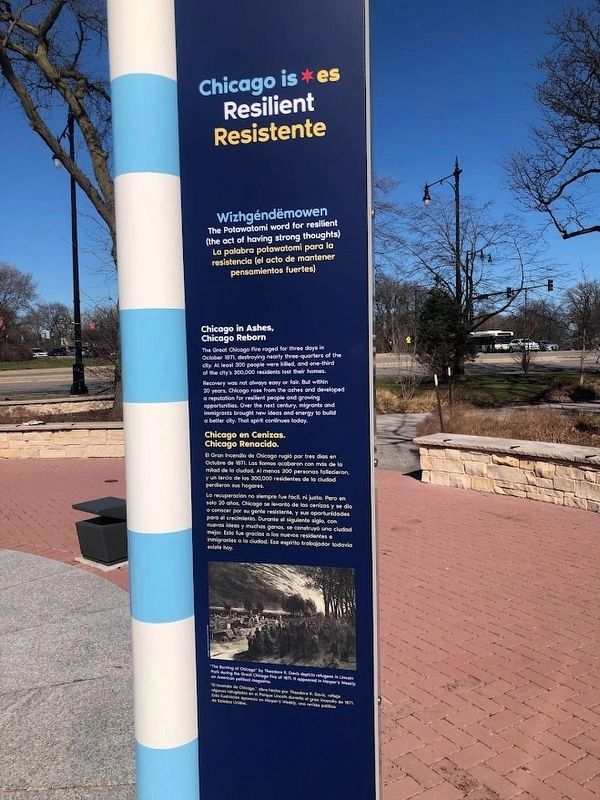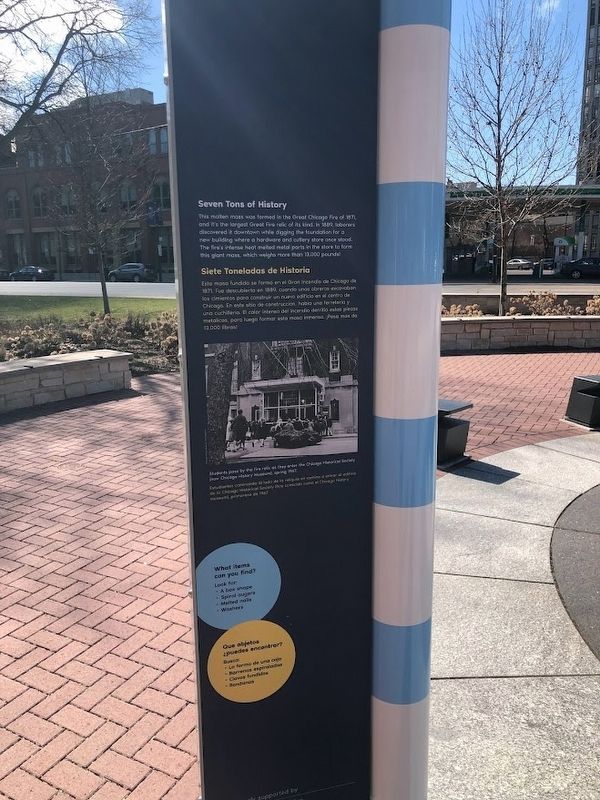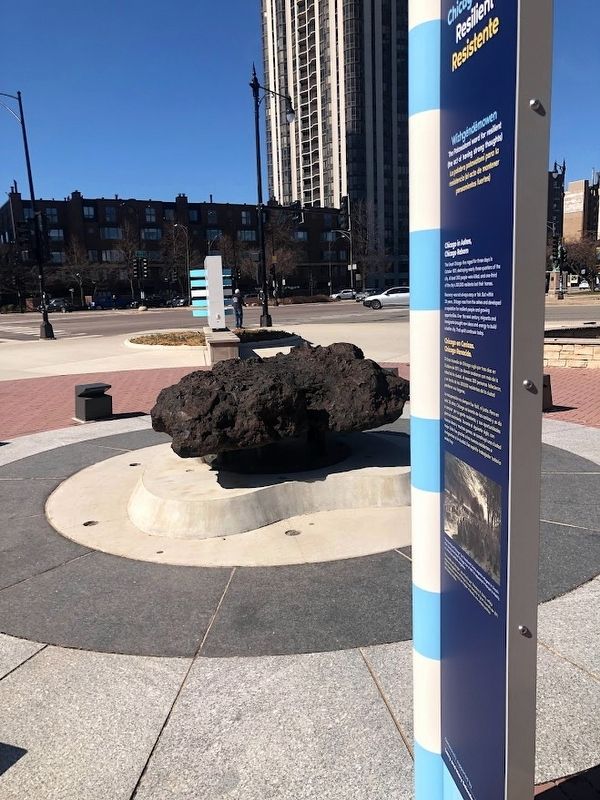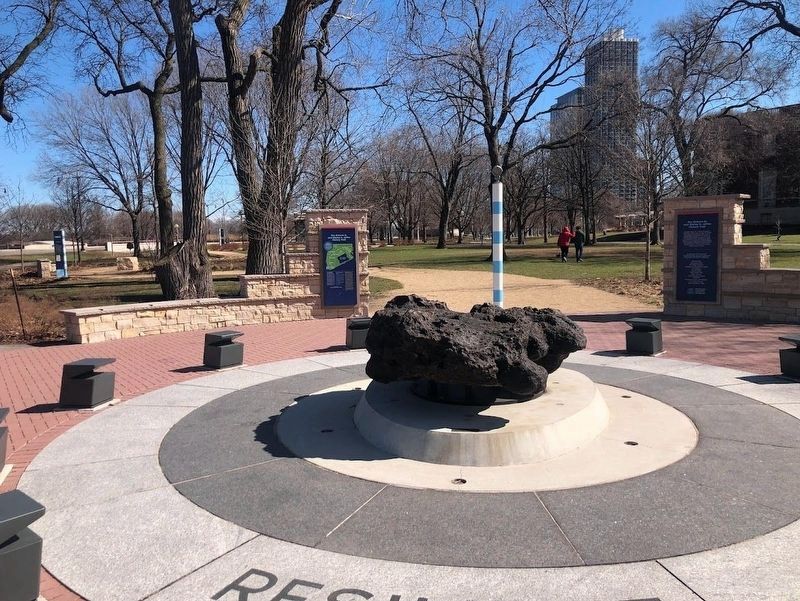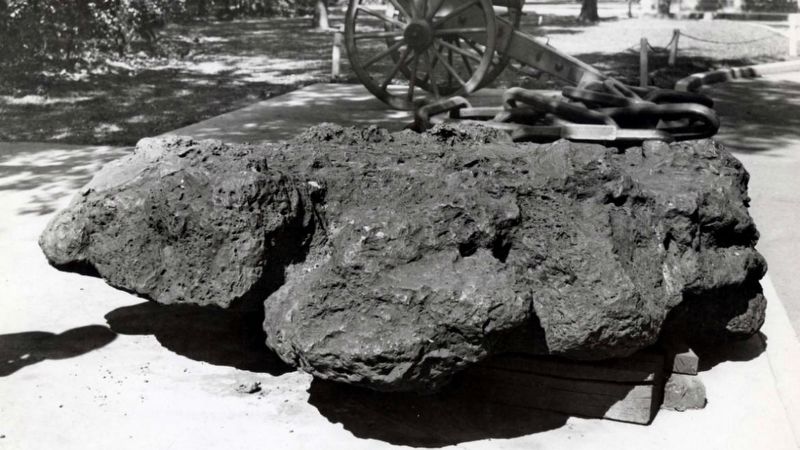Lincoln Park in Chicago in Cook County, Illinois — The American Midwest (Great Lakes)
Chicago is Resilient
Chicago es Resistente
The Potawatomi word for resilient (the act of having strong thoughts)
La palabra potawatomi para la resistencia (el acto de mantener pensamientos fuertes)
Chicago in Ashes, Chicago Reborn
The Great Chicago Fire raged for three days in October 1871, destroying nearly three-quarters of the city. At least 300 people were killed, and one-third of the city's 300,000 residents lost their homes.
Recovery was not always eary or fair. But within 20 years, Chicago rose from the ashes and developed a reputation for resilient people and growing opportunities. Over the next century, migrants and immigrants brought new ideas and energy to build better city. That spirit continues today.
Chicago en Cenizas.
Chicago Renacido.
El Gran Incendio de Chicago rugió por tres días en Octubre de 1871. Las llamas acabaron con más de la mitad de la ciudad. Al menos 300 personas fallecieron, y un tercio de los 300,000 residentes de la ciudad perdieron sus hogares.
La recuperación no siempre fue fácil, ni justa. Pero en solo 20 años, Chicago se levantó de las cenizas y se dio a conocer por su gente resistente, y sus oportunidades para el crecimiento. Durante el siguiente siglo, con nuevas ideas y muchas ganas, se construyó una ciudad mejor. Esto fue gracias a los nuevos residentes e inmigrantes a la ciudad. Ese espirito trabajador todavia existe hoy.
[Caption beneath photo:]
"The Burning of Chicago" by Theodore R. Davis depicts refugees in Lincoln Park during the Great Chicago Fire of 1871. It appeared in Harper's Weekly, an American political magazine.
"El Incendio de Chicago," obra hecha por Theodore R. Davis, refleja algunos refugiados en el Parque Lincoln durante el gran incendio de 1871. Esta ilustración aparecio en Harper's Weekly, una revista politica de Estados Unidos.
[Text on the rear side:]
Seven Tons of History
This molten mass was formed in the Great Chicago Fire of 1871, and it's the largest Great Fire relic of its kind. In 1889, laborers discovered it downtown while digging the foundation for a new building where a hardware and cutlery store once stood. The fire's intense heat melted metal parts in the store to form this giant mass, which weighs more than 13,000 pounds!
Siete Toneladas de Historia
Esta masa fundida se formó en el Gran Incendio de Chicago de 1871. Fue descubierta en 1889, cuando unos obreros excavaban los cimientos para construir un nuevo edificio en el centro de Chicago. En este sitio de construcción, habia una ferreteria y una cuchilleria. El calor intenso del incendio derritió estas piezas metálicas, para luego formar esta masa inmensa. ¡Pesa mas de 13,000 libras!
[Caption beneath the photo:] Students pass by the fire relic as they enter the Chicago Historical Society (now Chicago History Museum), spring 1967.
Estudiantes caminando al lado de la reliquia en comina a entrar al edificio de la Chicago Historical Society (hay conocido como el Chicago History Museum) primavera de 1967.
Erected 2021 by Chicago History Museum.
Topics. This historical marker is listed in these topic lists: Immigration • Native Americans • Notable Events • Parks & Recreational Areas. A significant historical month for this entry is October 1871.
Location. 41° 54.776′ N, 87° 37.936′ W. Marker is in Chicago, Illinois, in Cook County. It is in Lincoln Park. Marker is on North Clark Street near West La Salle Drive (Illinois Route 64), on the right when traveling north. The marker at the beginning of the Jaffee History Trail, which travels around the Chicago History Museum. It is near the molten mass it describes in the text. Touch for map. Marker is at or near this postal address: 1601 North Clark Street, Chicago IL 60614, United States of America. Touch for directions.
Other nearby markers. At least 8 other markers are within walking distance of this marker. The Richard M. and Shirley H. Jaffee History Trail (here, next to this marker); Chicago is Zhegagoynak (within shouting distance of this marker); Couch Tomb (within shouting distance of this marker); Chicago is Curious (within shouting distance of this marker); a different marker also named Couch Tomb (about 300 feet away, measured in a direct line); Chicago is Complex (about 300 feet away); Chicago is Community (about 400 feet away); a different marker also named Chicago is Community (about 600 feet away). Touch for a list and map of all markers in Chicago.
Regarding Chicago is Resilient. Found by workers helping to build a new Masonic Temple at State and Randolph streets downtown, the molten iron was under a store called Hall & Kimbark's, whose stock of iron had melted during the fire. According to the Chicago Park District, a candy manufacturer named Charles F. Gunther whose store on Clark Street had been destroyed in the fire, acquired the relic, one of many he amassed in his life. After Gunther died, the Chicago Historical Society bought much of his collection, including this mass. It sat east of the museum for many years, and in recent years it had become hard to find as it had become overgrown with shrubbery. Then, upon
the opening of the Jaffee History Trail in 2021, the mass was relocated to a much more prominent spot at the busy intersection of North Avenue and La Salle Drive.
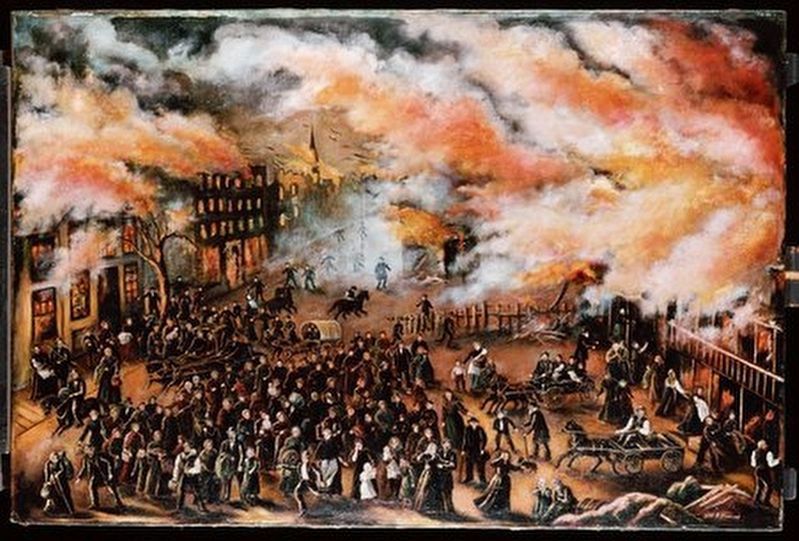
Courtesy of Chicago History Museum, 1912
6. "Memories of the Chicago Fire in 1871," by Julia Lemos
This oil on canvas painting from the Chicago History Museum's collection was painted by Julia Lemos in 1912. Lemos was living with her parents and her five children not far from the location of this marker when the fire swept through in October 1871.
Credits. This page was last revised on March 9, 2024. It was originally submitted on March 7, 2024, by Sean Flynn of Oak Park, Illinois. This page has been viewed 47 times since then. Photos: 1, 2. submitted on March 7, 2024, by Sean Flynn of Oak Park, Illinois. 3. submitted on March 8, 2024, by Sean Flynn of Oak Park, Illinois. 4. submitted on March 7, 2024, by Sean Flynn of Oak Park, Illinois. 5, 6. submitted on March 8, 2024, by Sean Flynn of Oak Park, Illinois.
